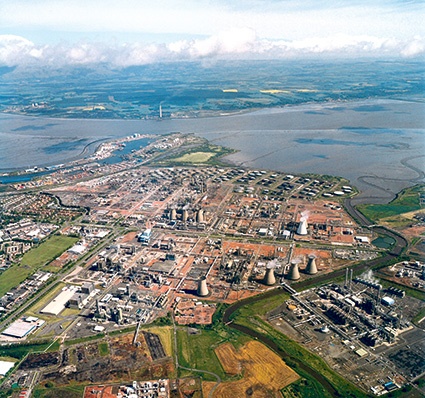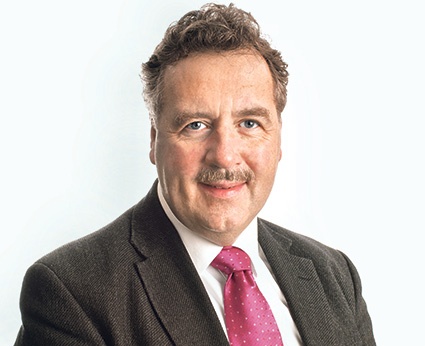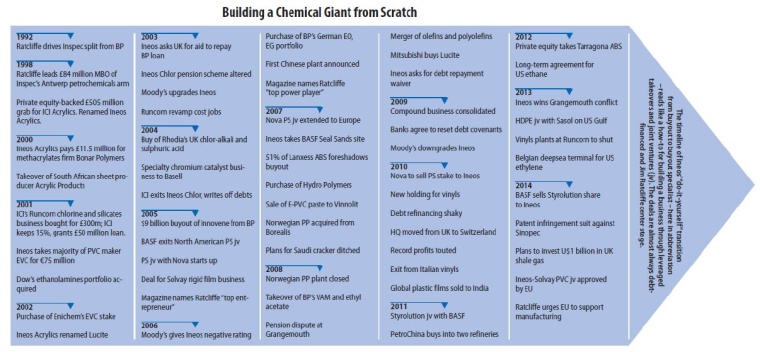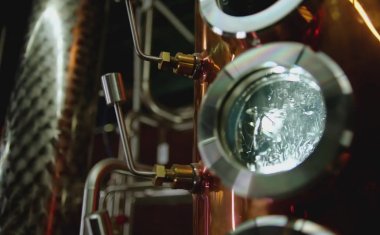Ineos Still Bullish on Shale Gas




As the UK government's push to repeat the US shale gas boom on its own soil moved up a notch in late 2014 with the sale of exploration licenses, Ineos revealed plans to expand upstream into onshore and offshore oil and gas.
The boldness and inventiveness of the now Swiss-based petrochemicals giant's move is characteristic of a company that likes to keep ahead of competitors in setting new trends. Although plunging oil prices have aroused market concern about the viability of the upstream drive - Ineos itself appears to have no worries.
Typically, the Swiss-based holding with $54 billion in annual sales - Ineos does not reveal group profits - is thinking big. It aims to invest $1 billion in shale gas production and infrastructure in Scotland and elsewhere in the UK.
Ineos has already acquired licenses in central Scotland from where it hopes to eventually pipe gas to use as an energy and feedstock source for its petrochemicals and refinery complex at Grangemouth (photo). The Scottish site, shaken by a much-publicized strike in 2013, is currently supplied with ethane from dwindling North Sea gas reserves at a cost Ineos says is two to three times that paid by consumers in the US.
Along with using the self-produced ethane as a feedstock for its own plants, Ineos also hopes to enter the North Sea oil and gas sector to take advantage of a buyers' market for production assets.
The risks behind the upstream initiative became evident in summer 2014, when oil prices began pointing sharply downward. By January 2015, they were less than half the level of six months ago. The value of Ineos' high-yield bonds also weakened amid investors' concerns it may have paid too much for the licenses. They fear the company could be forced to sell polymers and other petrochemical derivatives at prices dictated by the cost of crude, threatening any margins it might enjoy from shale-based ethane in European petrochemicals derivatives markets.
But these fears could be offset by the likelihood that Ineos' entry into the North Sea fray when oil is cheap would allow it to buy up offshore assets at a bargain. Company executives have consistently emphasized that the UK upstream projects are long-term with full benefits to be realized only over a 10-15 year period.
"The oil price collapse will have no effect at all on our UK shale plans," Tom Crotty, Ineos corporate affairs and communications director, asserted in an interview with CHEManager International. "Our interest is in gas, not oil. We want the gas more as a feedstock than an energy source. As gas is still expensive in the UK, the incentive to explore for and produce it in the country is extremely high."
Ineos aims to become one of the leading shale producers in the UK, with the yield supplying a high proportion, if not all, of the country's gas needs. "Our objective is to establish an indigenous source of internationally competitive feedstock over a 10-15 year period," Crotty says.
The company hopes shale feedstocks will not only safeguard the future of Grangemouth but of UK and European manufacturing altogether. Securing competitive energy and raw materials is the golden thread running through Ineos chairman Jim Ratcliffe's public statements. "Our aim is simple, he says-we hope to maintain and create jobs in Britain's industrial heartland."
Ratcliffe's top priority is to turn the loss-making Grangemouth site-which Ineos threatened to close in 2013-into a highly profitable operation. The company's managers believes the site's finances will be transformed by the exploitation of US shale gas-derived ethane or, as John McNally, chief executive of Ineos' UK olefins and polymers business, puts it, "Grangemouth will be brought back into the premier league of petrochemical sites in all of Europe."
First shipments by a dedicated fleet of specially equipped vessels will arrive in Scotland next year following completion of an ethane import terminal, storage tanks and other infrastructure into which Ineos is pumping £300 million. A terminal is also being erected at Rafnes, Norway.
US ethane is expected to enable Grangemouth's 720,000 t/y gas cracker, which has been running at 50% of capacity, to be operated at 100%.
The US gas is to be supplemented by ethane feedstocks from Ineos' first UK shale output, which according to a timetable submitted to the UK government last year should be around 2017-2019.
The company hopes to speed the process of winning permits for production of shale gas by promising to share profits of its wells with communities. It plans to allocate 6% of revenue to homeowners, landowners and local authorities, with the total eventually topping £2.5 billion.
"We think our plan could be the game-changer in Britain," Ratcliffe said when explaining the revenue-sharing scheme. "The rewards will be fairly shared by everyone. It's what they do in America, and we think it is right to do this here."
As it presses ahead with its onshore shale gas projects, Ineos wants to begin establishing itself as an offshore player in the North Sea oil and gas fields. But rather than internationally competitive feedstocks, these plans are aimed at providing energy supplies from oil and gas reserves.
Ineos has advertised for a chief executive, an operations director and positions for four other managers to run its offshore oil and gas production business. Their immediate task will be to assess opportunities for asset acquisitions in the North Sea at a time when existing operators and investors are looking to sell.
As Crotty explains, "our strategy has always been to take over commodity chemical assets and improve their performance by reducing costs. We are adopting a similar approach with oil and gas. The current low oil price is a good thing for us in this respect because it could accelerate the sale by some big companies of North Sea assets."
"As both a chemicals and energy producer, Ineos will be a different company," he notes. "But you have to evolve."
Click here for CHEManager International's Dede William's analysis of Ineos CEO Jim Ratcliffe's shale gas strategy.
most read

Relocation of Chemicals Production Footprint in Full Swing
A new Horváth study based on interviews with CxOs of Europe’s top chemical corporations reveals: The majority of board members expects no or only weak growth for the current year.

20 Years of CHEManager International
Incredible but true: CHEManager International is celebrating its 20th anniversary!

ISPE Good Practice Guide: Validation 4.0
The Validation 4.0 Guide provides a comprehensive approach to ensuring product quality and patient safety throughout a pharmaceutical product's lifecycle.

US Tariffs Fatal for European Pharma
Trump's tariff policy is a considerable burden and a break with previous practice.

Pharma 4.0 – the Key Enabler for Successful Digital Transformation in Pharma
Part 1: Building a Business Case for Pharma 4.0












